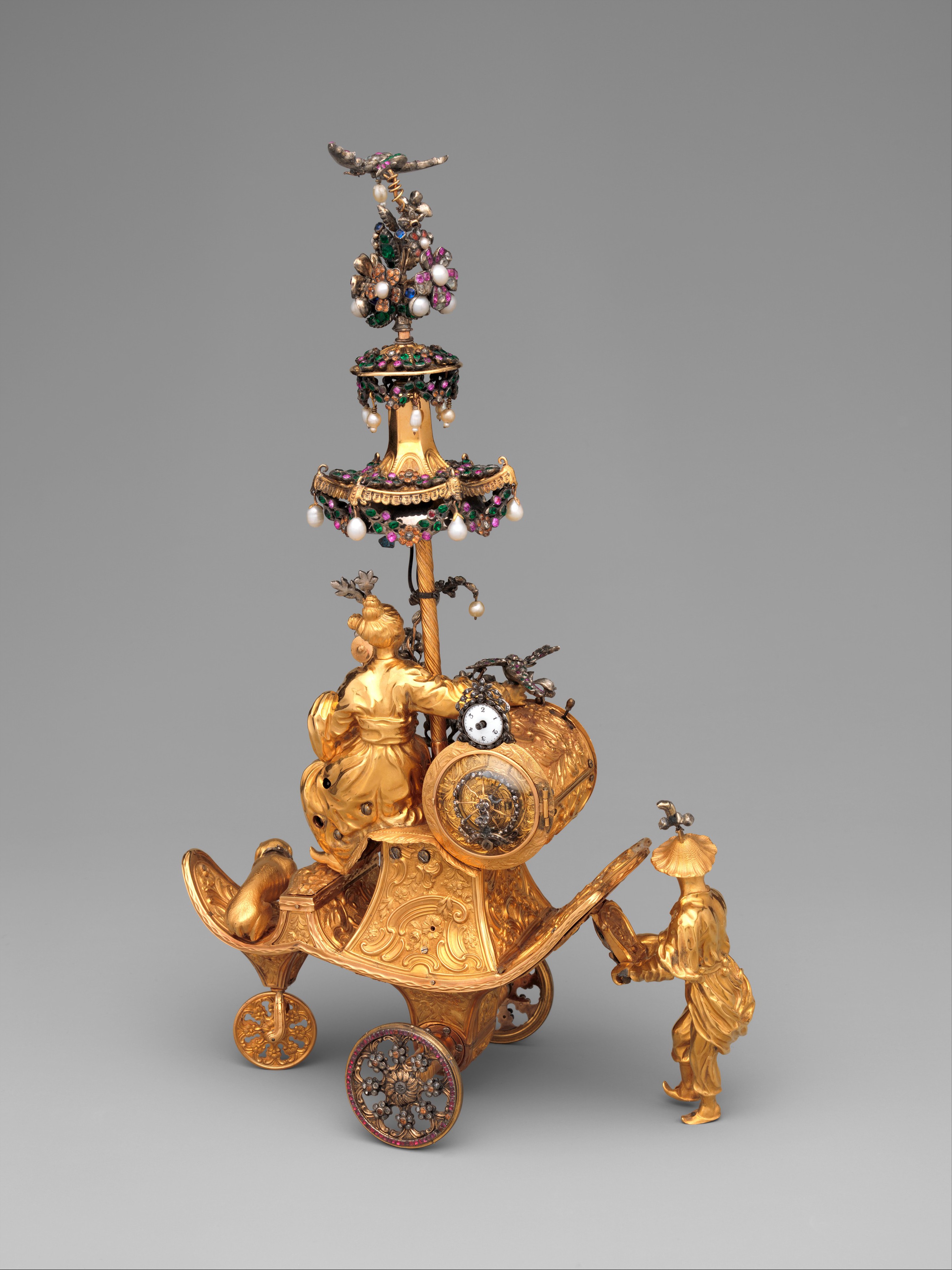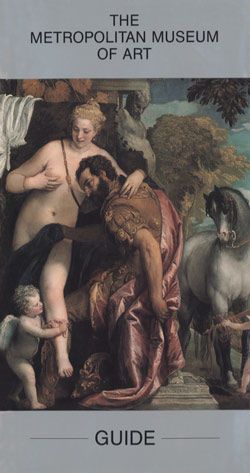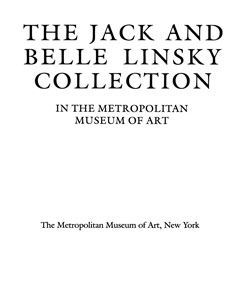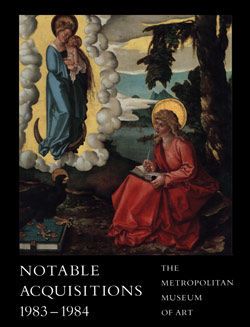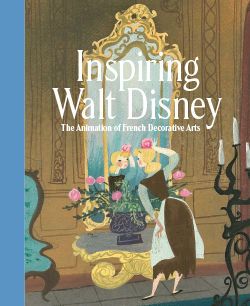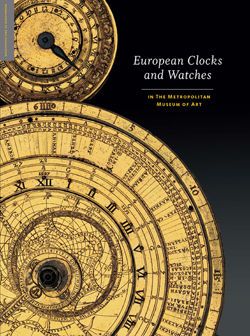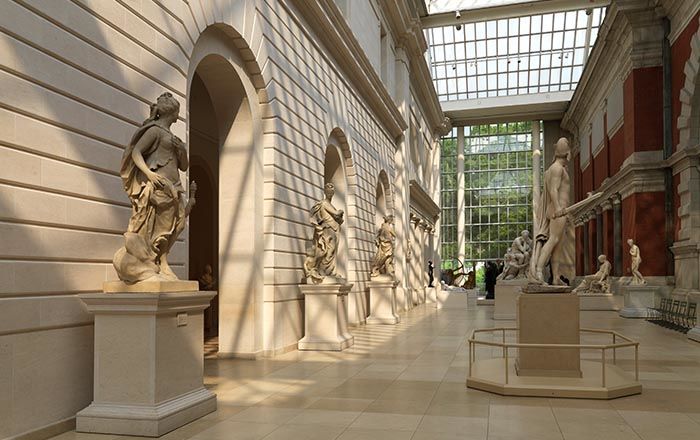Automaton in the form of a chariot pushed by a Chinese attendant and set with a clock
James Cox British
The surviving half of a pair, this automaton was commissioned by the English East India Company in 1766 for presentation to the emperor of China. Mandarins and flying dragons like the creature perched atop the bouquet of flowers on the top of the double-tiered parasol represent European stereotypes of Chinese culture in the Qianlong era (1736–95); the Chinese apparently considered them to represent a curious European taste.
The automaton is set in motion by tiny levers that activate the whirligig held in the lady's left hand and the wings of the bird in her right hand. A bell hidden beneath the lower tier of the parasol sounds the hours and the entire mechanism is propelled by a spring and fusee device housed above the two central wheels; the attendant is dragged along behind. Two more birds were originally fixed on spiral springs attached to the front end of the chariot, and they must have fluttered when the automaton was set in motion.
This image cannot be enlarged, viewed at full screen, or downloaded.
This artwork is meant to be viewed from right to left. Scroll left to view more.


